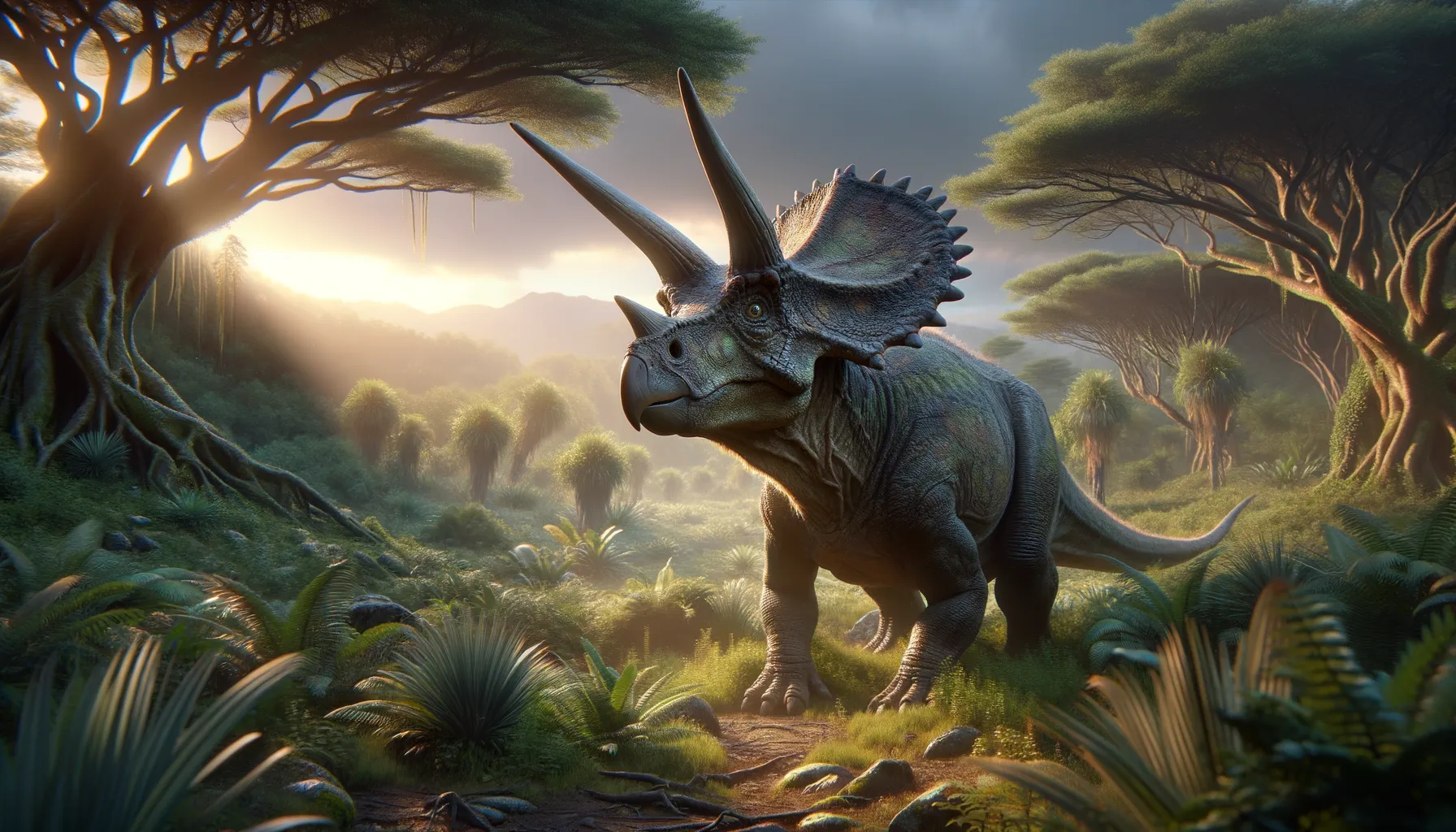
Helioceratops
A glimpse into ancient plant-eaters' world.
Period
Cretaceous
Length
Roughly 6 meters long.
Height
Up to 2 meters at the hips.
Weight
Approximately 1 ton.
Helioceratops was a herbivorous dinosaur from the Cretaceous period, known for its beaked face and agile build. It was closely related to Protoceratops, showcasing similar adaptive features that allowed it to thrive in the prehistoric landscapes of Asia. Its name means 'Sun Horned Face', reflecting its prominent cranial structure. Through fossil remains, scientists have gleaned insights into its diet and environment, contributing to our understanding of dinosaur ecology.
Diet
Helioceratops primarily fed on plants, using its beak to clip vegetation. Its diet likely included ferns, cycads, and conifers, typical of the flora available in its Cretaceous habitat.
Hunting
As a herbivore, Helioceratops did not hunt other animals. Instead, it foraged for plants, using its beak to snip at low-lying vegetation.
Environmental challenges
Helioceratops faced challenges from predators like theropods, requiring keen senses and group behavior for protection. Changes in climate and vegetation would have required adaptations in diet and social patterns. The shifting landscapes of the Cretaceous caused periodic resource scarcity, demanding mobility or resourcefulness from this dinosaur.
Speed
Relatively slow, adapted for grazing.
Lifespan
Estimates suggest several decades.
First discovery
Discovered in China in the early 21st century.
Fun Facts
- Helioceratops was a herbivorous dinosaur that lived during the Early Cretaceous period, about 125 million years ago.
- The name 'Helioceratops' means 'sun horned face,' referring to its potential frilled appearance.
- It was discovered in the Jiufotang Formation in Liaoning, China, known for its rich fossil beds.
- Helioceratops belonged to the ceratopsian group, which also includes the famous Triceratops.
- Unlike its later relatives, Helioceratops was relatively small, about the size of a modern-day sheep.
- This dinosaur likely traveled in herds and had a beak-like mouth useful for cropping plants.
- Helioceratops had a frill at the back of its head, a distinguishing feature of ceratopsian dinosaurs.
Growth and Development
Juvenile Helioceratops likely grew rapidly to reduce vulnerability to predators. Growth rates were influenced by the availability of resources such as food and habitat. Parental care, if present, would have played a role in protecting young individuals until they could fend for themselves.
Habitat
Helioceratops inhabited semi-arid regions with seasonal rainfall, rich in low vegetation. Open plains and scattered woodlands formed its primary environment, providing ample food sources. Water sources like rivers and lakes were crucial for hydration and attracting plants and other herbivores.
Interaction with other species
Helioceratops lived alongside other herbivorous dinosaurs as well as carnivorous predators. It likely relied on herding behavior as a defense against predators. Fossil evidence suggests it cohabited with species that shared its grazing grounds, possibly resulting in competition for resources.
Natural lifespan
Helioceratops had a life expectancy typical of medium-sized herbivores.
Reproduction
Helioceratops probably laid eggs like most dinosaurs, with nests built in shallow ground depressions. Parental care might have included guarding nests from predators and ensuring the safety of hatchlings until they could join the herd.
Social behaviour
Helioceratops likely exhibited herd behavior, offering protection against predators. Communication within the herd could have included visual signals and vocal sounds. Such social structures were crucial for survival in the predator-rich environments of the Cretaceous.
Fossil locations
Fossil evidence of Helioceratops has been primarily found in China, providing valuable insights into its anatomy and ecology. These fossil sites are crucial for understanding the distribution and lifestyle of this species during the Cretaceous period.
